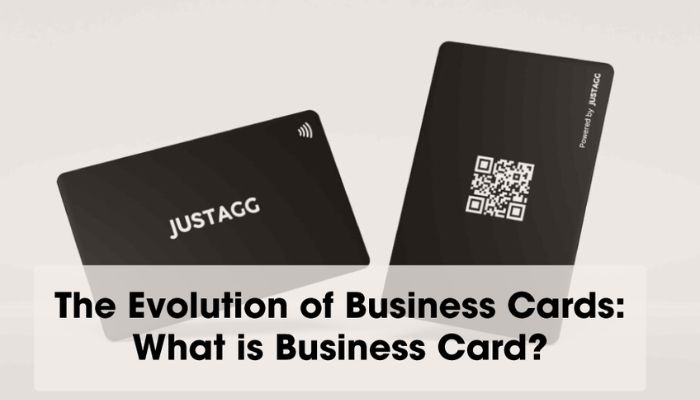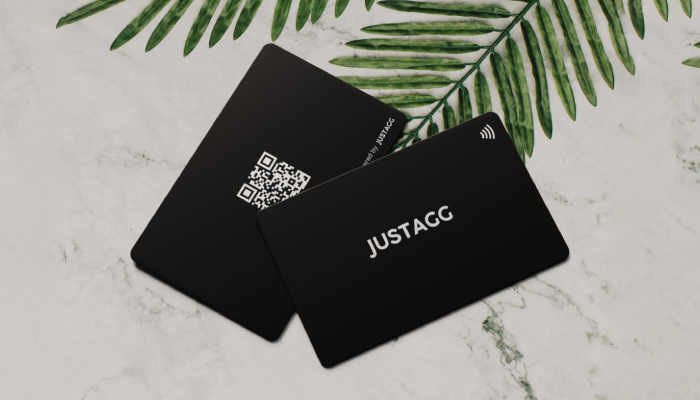In today’s fast-paced and interconnected business landscape, the evolution of business cards has been nothing short of remarkable. These small, printed cards have transformed from humble introductions to powerful networking tools, adapting to the changing needs and trends of professionals worldwide.
As we delve into the intriguing world of the evolution of business cards, we will explore their history, meaning, and their continued relevance in the digital age. So, let us embark on a journey to understand the profound impact and significance of this seemingly simple piece of cardstock known as the business card.
Before we embark on the ever-evolving journey of business cards, it’s important to address a fundamental question: “What is a business card?”
What is a Business Card?
In its simplest form, a business card is a small, printed card that contains essential contact information for an individual or a company. It serves as a convenient and professional means of exchanging contact details during networking events, meetings, or chance encounters.
A business card typically includes details such as the person’s name, job title, company name, phone number, email address, and physical address. Now that we have a clear understanding of what a business card entails let’s explore the fascinating evolution of business cards throughout history.
History of Business Cards
The history of business cards takes us back to ancient times when people used various methods to exchange information and establish connections. Let’s explore the journey in the following.
15th Century China
According to many historians, the first business cards were used by aristocrats and royalty in China. These cards were called “visiting cards / Meishi” and were used to announce the holder’s intention of visiting a person or household.
17th Century Europe
Visiting cards became popular in Europe in the 17th century. These cards were called “calling cards / Visite Biletes” and were used to introduce oneself to another person or to leave one’s contact information after a visit.
Even they became a symbol of social status and were used by merchants to establish connections with potential customers. These cards were often larger in size and contained elaborate details about the individual and their family.
18th Century
In the 18th century, business cards began to be used by businesses to advertise their services and products. These cards were called “trade cards” and were often decorated with images or illustrations.
19th Century
With the advancements in printing technology during the 19th century, business cards became more accessible, affordable, and standardized in size and design. They also began to include more information, such as the holder’s title, company, and address.
20th Century
In the 20th century, business cards became even more popular as businesses became more globalized. They also began to be used in new ways, such as for networking and marketing. Another term often used is “Name Cards,” which shares the same purpose and information as a business card.
21st Century
In the 21st century, business cards have continued to evolve. They are now often printed on recycled or sustainable materials, and they may include QR codes or other digital information. Now, we can recognize them as “digital business cards and vCards.”
Significance of Business Cards
In a digital world, business cards may seem like an outdated relic. However, they are still an important tool for networking and building relationships. If you are looking to make a good impression on potential clients or colleagues, a well-designed business card can be a valuable asset.
- Business cards provide a way to share contact information. This is especially important in a business setting, where people may need to get in touch with you quickly.
- They make a good first impression. A well-designed business card can show that you are professional and organized.
- They help you build relationships. When you exchange business cards with someone, you are creating a connection that can lead to future opportunities.
Beyond its practical purpose, a business card carries symbolic meaning. Let’s get into the specifics of the b card meaning.
Business Card Meaning
Business cards are more than just a way to share contact information. They also carry symbolic meaning, representing professionalism, credibility, and the desire to establish a connection.
Below are the symbolic demonstrations of the business card meaning or B card meaning.
Professionalism
A business card is a symbol of professionalism. It shows that you are serious about your business and that you are prepared to network.
Credibility
A business card also symbolizes credibility. It shows that you are a legitimate business or professional and that you can be trusted.
Desire to Connect
When you exchange business cards, you are signifying your desire to connect with the other person. You are showing that you are interested in doing business with them or learning more about their company.
Willingness to Engage
The exchange of business cards also signifies a willingness to engage further. It shows that you are open to the possibility of working together in the future.
Formal Ritual
In some cultures, the exchange of business cards is seen as a formal ritual. This means that it is important to hand over and receive the card with both hands and to do so respectfully.
Wrapping Up
The evolution of business cards has witnessed a remarkable transformation in their design, purpose, and cultural significance. From the ancient Meishi cards to the modern-day business cards, they have served as powerful tools for networking and establishing connections. Despite the advancements in technology, business cards continue to symbolize professionalism, credibility, and the desire to build relationships. In the ever-changing landscape of business, the evolution of business cards highlights their enduring relevance and the value they hold in making meaningful connections.
FAQs
What is the Indian business card size?
The standard Indian business card size is 3.54 x 2.16 inches or 9 x 5.5 cm.
What is business card design?
A business card is a compact and printed card, typically the size of a credit card, which encompasses important information about your business, including your name, contact details, and brand logo. It plays a crucial role in your branding strategy as it serves as a visual representation and extension of your overall brand design.
Do business cards have a picture?
Business cards can have a picture, but it’s not always necessary. Whether or not to include a picture is a personal decision.

